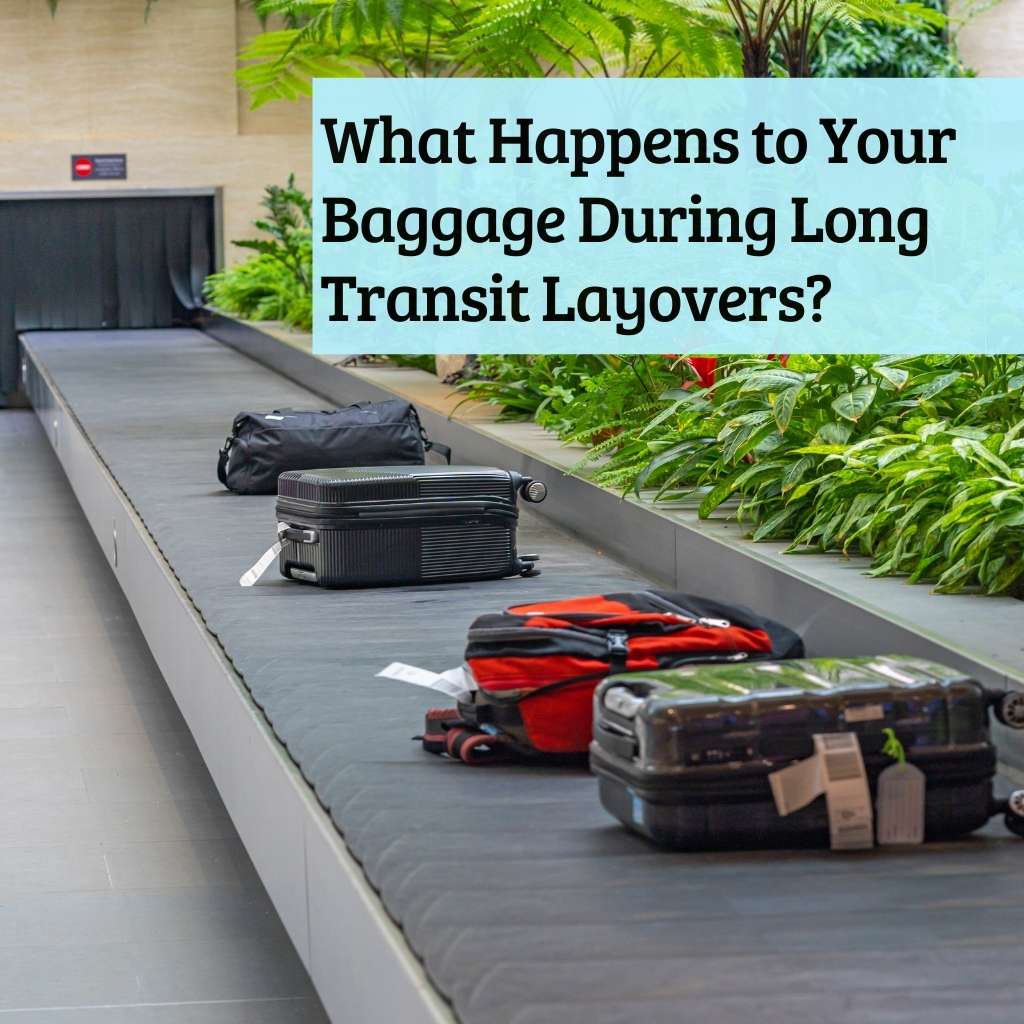When you’re traveling internationally, there’s always a chance that your connecting flights will have long layovers. This can be an anxious time for travelers, as they wonder what will happen to their baggage during the extended layover. Will it make it onto the connecting flight? Will it get lost in transit? Let me answer those questions and give you a glimpse into how your baggage travels during long layover periods.

When baggage is checked in at the beginning of your trip, it’s tagged with a baggage tag that includes your name and final destination. Once your baggage has been accepted, it’s placed onto a conveyor belt or baggage cart, where it will be taken to the baggage handling area. Here, baggage handlers will load the bags into a baggage container or baggage hold, depending on the type of aircraft. The baggage is then transported to the departure gate and loaded onto the airplane.
Once you arrive at your connecting flight’s layover destination, baggage handlers will unload the baggage from the plane and reload it into a new baggage container or baggage hold for the next leg of your journey. The baggage tag will remain with your baggage throughout the entire journey, ensuring that it reaches its final destination safely.
This is a straightforward process if you are traveling between the origin and the destination with the same airline or their codeshare partners. It is not always the case, however. Several factors influence how your baggage is handled during long layovers, including the type of ticket, country of layover, and airline. Here are a few use cases assuming this is an international travel issue.
- If you have a through ticket from a point-to-point destination then in most cases, you do not need to reclaim your baggage. The airport automatically transfers them to your connecting flight irrespective of the airline you are flying. Your baggage tag mentions your final destination as well as the transit airport code.
- Let’s say you have separate tickets from Point A (origin) to Point B (layover) and Point B to Point C (final destination). In such a case, you have to reclaim your baggage at Point B (layover destination). And check in again for the connecting flight. In this case, you have to go through immigration and customs as well.
- For an inbound international passenger to the US, the baggage rules are standard irrespective of the type of ticket you hold. As per US law, international passengers have to clear immigration & customs at the first port of entry. This applies even if you are in transit. Hence, you have to reclaim your baggage at your first point of entry, even if it is a stopover. You then need to re-check your baggage for the connecting flights even if it is an international flight.
- In the case of Schengen countries, passing through immigration at the first port of entry even if you are transiting is mandatory. You usually do not pass through customs and reclaim your baggage. It is tagged to the final destination (for through ticket holders) of the Schengen country.
Many airlines offer complimentary transit visas or VOA (visa on arrival) and hotel accommodations to transiting passengers with extra-long layovers. In such cases, they tag your bags to the final destination and you cannot reclaim them even if you wish. Keep this in mind when packing for your trips so that your carry-on luggage has all the items you need.
Long layovers have both advantages and disadvantages. It depends on each flyer as well as their budget since many times a long layover can save you money. I use WayAway and Skyscanner websites to compare airfares among airlines and layovers. Planning your travel is made much easier thanks to its flexibility and wide range of options.
Nevertheless, you must make provisions for Force Majeure events, such as flight cancellations and delays. Such circumstances force you to have a long layover even if you don’t like them. Many times, you may not be aware that your checked-in bag has been rerouted. The best practice is to check with the airline ground staff at the airport to determine how your luggage will be transported. The last thing you want is to discover when you arrive at your destination that your bags haven’t arrived. You are entitled to compensation, but it gets complicated when your original airline places you on a different flight due to unforeseen circumstances. You don’t know who to contact. The Compensair service comes in handy when airlines attempt to pass the buck instead of compensating you monetarily.
You should understand how baggage transportation works when you travel internationally. This will keep you informed and help you make quick decisions. Furthermore, it can assist you with planning your travel and booking flights. If you have any experiences to share, please leave a comment below. I will be happy to include any scenarios I might have missed in this blog.
Disclaimer:
This blog may contain affiliate links. At no extra cost to you, we may get a small commission if you buy anything. All products and services we endorse have been personally used or come highly recommended to us. These incomes allow us to keep the community supported and ad-free.





Traveling from Pittsburgh to Merida México. When I arrive in Houston Texas I have an 8 hour layover connecting to Merida. What happens to my checked bag during that time? Will it get lost?
It depends on your ticket. If it is a single ticket with the same PNR and the same airline then your bags will be transferred to the connecting flight by the airline. Your baggage tag will have all the details. In case, it is not a single ticket then you might have to collect the bags at Houston and rechekin for the onward flight. I suggest that you check with the airline counter when you checkin at Pittsburg. They will provide you more accurate information.